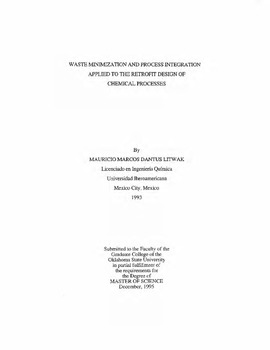| dc.description.abstract | The chemical processing industry is faced with a need to manufacture quality products while minimizing production costs and complying with a variety of safety and environmental regulations. These regulations include the Clean Air Act (CAA), the Clean Water Act (CWA), the Resource Conservation and Recovery Act (RCRA), and the most recent the Hazardous Organic National Emission Standards for Hazardous Air Pollutants (HON) (Zanetti 1994). In 1990, the Environmental Protection Agency (EPA) promulgated the Pollution Prevention Act (Freeman, et al 1992). This act declared that the national policy of the United States is to prevent or reduce pollution at the source, that pollution which cannot be prevented should be recycled in an environmentally safe manner, and that waste disposal should be employed only as a last resort. Hydrocarbon Processing (1993) reports on an increased rate in pollution control costs and estimates that by 1995 the hydrocarbon processing industry will spend 152.6 billion dollars in pollution control. As a result of the Pollution Prevention Act, the constant change in regulations, and the increasing pollution control costs, and because waste treatment is not the solution to the pollution problem, end-of-the-pipe treatment is no longer feasible or recommended. Therefore, a recent approach that has been taken is to apply sotlrce reduction instead of end-of-the-pipe treatment. In this way, industry complies with all regulations and reduces waste treatment costs, thus increasing the overall profit of operation. | |
